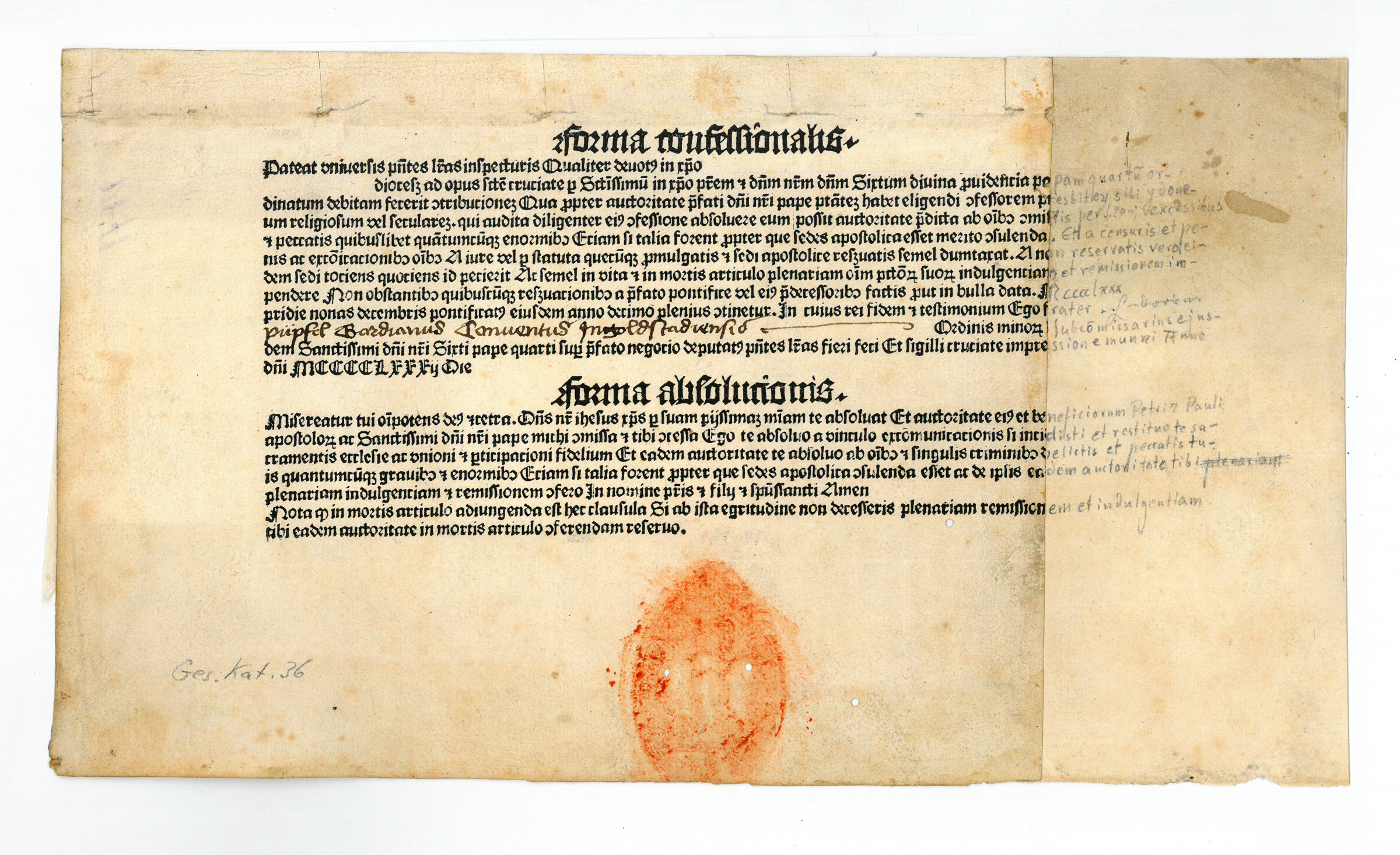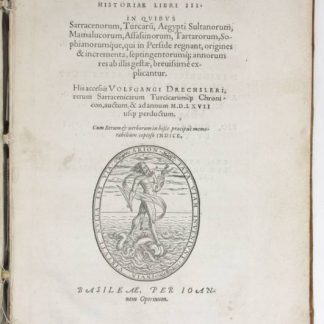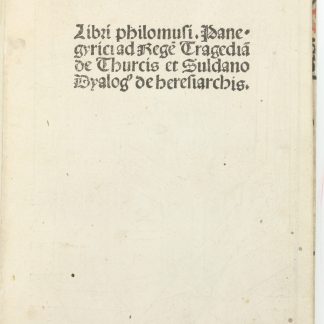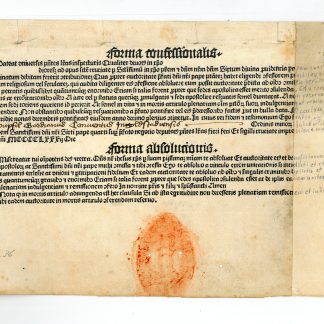Incunabular broadside by the "printer of the Rochus-Legende", urging war against the Turks
[Indulgentia, 1482, issued by Sixtus IV for promoting the war against the Turks].
Narrow oblong folio (310 x 175 mm). Single page, leaf clipped along right edge and repaired (size of preserved original sheet: 237 x 175 mm). Gothic type in 21 lines, with manuscript addition in contemporary hand, and modern pencilled manuscript addition replacing clipped text, based on a complete example.
€ 12,500.00
An incredibly rare incunabular indulgence certificate, only two copies listed in institutional collections by ISTC (at Freiburg and the Bayerische Staatsbibliothek, respectively), and one further now held at the University of Pennsylvania. The unnamed printer, known simply as the "printer of the 'Rochus-Legende'", also produced a prayer book, and (as his name of convenience suggests) the "Historie von S. Rochus". All three of these works are dated to roughly 1482-83, suggesting that the Rochus-Legende printer would have been a prolific member of the early printing industry in Nuremberg in the 1480s, but with few other hints to his identity. As noted by Rosenthal, "Printed in a fantastic black letter, which was used only by the anonymous 'Printer of the Rochuslegende'. Only a few products of this uncommon press are known" (Rosenthal).
"Emericus de Kemel (a native of Eger), the Proctor General elected by the Pope Sixtus IV to proclaim the Indulgence relative to the war against the Turks [...] in Germany and other countries, went to Nuremberg in January 1482, where he himself preached the Indulgence and selected subdelegates [...] for the surrounding dioceses. The respective names of the delegates were in some cases already printed, in others filled in by hand" (Rosenthal). In the case of this scarce copy, the inserted name (likely in his own hand) is that of Ludwig Püpfel, the guardian of the Convent of Ingolstadt, who signs himself as "[Ludovicus] Püpfel Gardianus Conventus Ingolstadiensis".
A fantastic survival from an enigmatic early press.
1) With an inked addition from Ludwig Püpfel, Ingolstadt, and possibly in his ownership for a time.
2) Listed in Catalogue 92 of antiquarian bookseller Jacques Rosenthal (1854-1937) in Munich, 1931.
3) Leo Cadogan Rare Books, London, 2017.
With remnant of wax seal. 1 cm of top margin and 3 cm of right-hand margin clipped away, the latter with partial loss to text. Both margins professionally repaired with matching paper; a later hand has completed all missing text in pencil.
GW 36. GW (Einbl.) 28. BSB-Ink F-190. ISTC is00568400. Rosenthal cat. 92, no 36 (see also variant printing no. 33).






